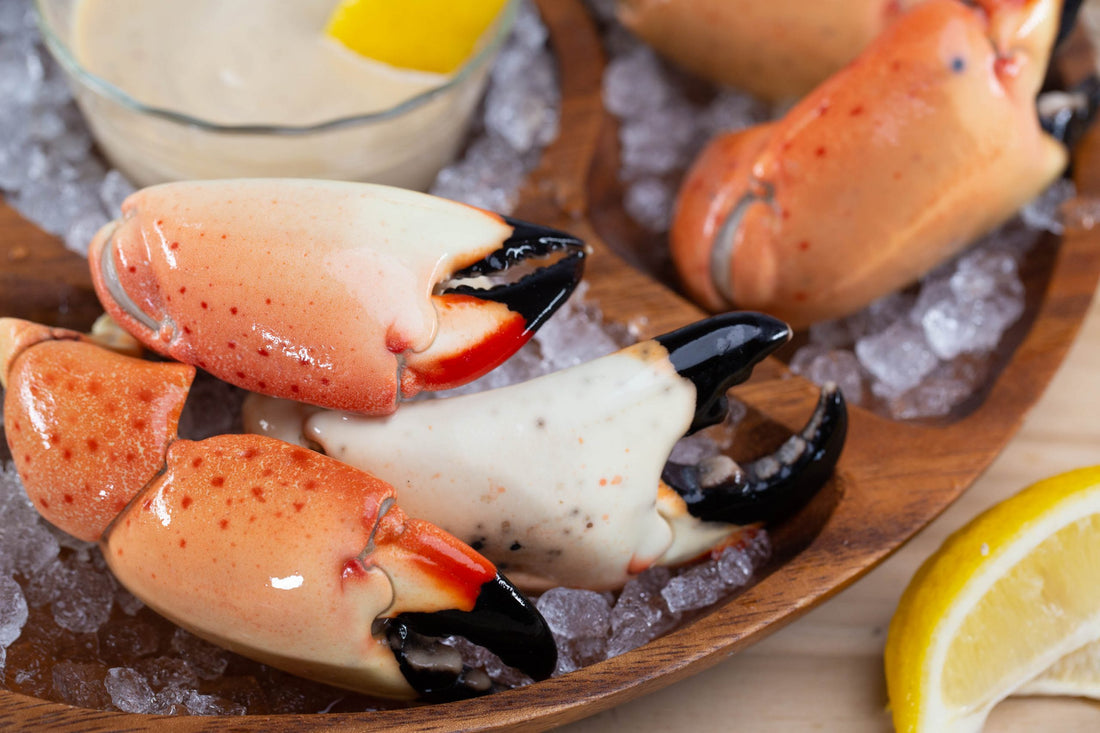Stone crabs are not only a delicacy cherished by seafood lovers but also a fascinating species with unique characteristics and behaviors. Here are 15 fascinating facts about stone crabs that will deepen your appreciation for these remarkable crustaceans.
1. Habitat and Distribution
Stone crabs are primarily found along the western North Atlantic, from Connecticut to Belize, including Texas, the Gulf of Mexico, Cuba, and the Bahamas. They thrive in warm waters with rocky or sandy substrates, which provide ample hiding spots from predators.
2. Distinct Physical Characteristics
One of the most distinctive features of stone crabs is their large, asymmetrical claws. The larger "crusher claw" is used to break open the shells of their prey, while the smaller "pincer claw" is more dexterous for handling food.
3. Regenerative Abilities
Stone crabs possess an incredible ability to regenerate lost limbs. If a stone crab loses a claw, it can regrow it over time. This regenerative process is crucial for their survival, as their claws are vital for defense and feeding.
4. Molting: A Crucial Process
Molting is a critical process in the life of a stone crab. As they grow, they must shed their exoskeleton and form a new, larger one. During molting, stone crabs are particularly vulnerable to predators as their new exoskeleton is initially soft and hardens over time.
5. Reproduction and Lifecycle
Stone crabs have a unique reproductive process. Mating typically occurs after the female has molted, as her new shell is still soft, allowing the male to deposit sperm. Females can store sperm for several months, using it to fertilize multiple batches of eggs.
6. Ninety-Eight Percent of Stone Crabs Come from Florida
Florida is the primary source of stone crabs, providing about 98% of the stone crabs harvested in the United States. The warm waters and suitable habitats make Florida an ideal environment for stone crabs.
7. Stone Crabs Become Soft-Shell Crabs
During the molting process, stone crabs shed their hard exoskeleton anclad become soft-shell crabs for a brief period. This stage makes them particularly vulnerable to predators.
8. Stone Crabs Have Few Predators
Stone crabs have relatively few natural predators. Their hard exoskeleton and powerful claws provide effective defense mechanisms against many potential threats. Predators include octopuses, groupers, sea turtles, and humans.
9. Stone Crabs Are Incredibly Strong
Stone crabs are known for their incredible strength. Their crusher claw can exert a force of up to 19,000 pounds per square inch, enabling them to crack open hard shells of their prey easily.
10. Stone Crabs Are Not Ambidextrous
Stone crabs are not ambidextrous; they typically favor one claw over the other. The larger crusher claw is usually on the right side, used for crushing prey, while the smaller pincer claw on the left side is used for more delicate tasks.
11. Fishers Only Harvest the Stone Crab's Claws
To ensure sustainability, fishers only harvest one claw from each stone crab, leaving the crab to regenerate the lost limb. This practice helps maintain the stone crab population and supports a sustainable seafood industry.
12. Stone Crabs Lay a Lot of Eggs
Female stone crabs are prolific breeders, capable of producing up to a million eggs in one spawning season. The eggs are carried under the female's abdomen until they hatch into larvae.
13. Female Stone Crabs Live Longer Than Males
Female stone crabs generally live longer than males, with some females reaching up to seven years of age. This longevity allows them to produce multiple generations of offspring.
14. Stone Crab Season is from October to May
The stone crab harvesting season typically runs from October 15 to May 1. During this period, commercial and recreational fishers can legally harvest stone crabs, ensuring the population has time to regenerate during the closed season from May to October.
15. Health Benefits of Stone Crab Meat
In addition to their delectable taste, stone crab claws offer several health benefits. The meat is low in fat and high in protein, making it a nutritious choice for a balanced diet. It is also rich in essential vitamins and minerals, including vitamin B12, zinc, and selenium, which support overall health and well-being.
Ordering Stone Crabs at Key Largo Fisheries
If you're eager to savor the delectable taste of stone crabs, Key Largo Fisheries is your go-to source. Our store offers freshly harvested stone crab claws, ensuring you receive the highest quality product. You can conveniently order stone crabs online from our store and have them delivered straight to your door, allowing you to enjoy this delicious seafood delicacy from the comfort of your home.

